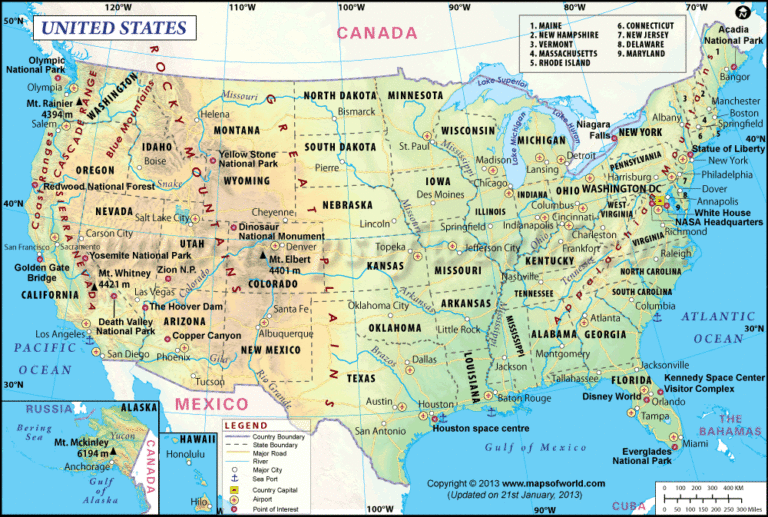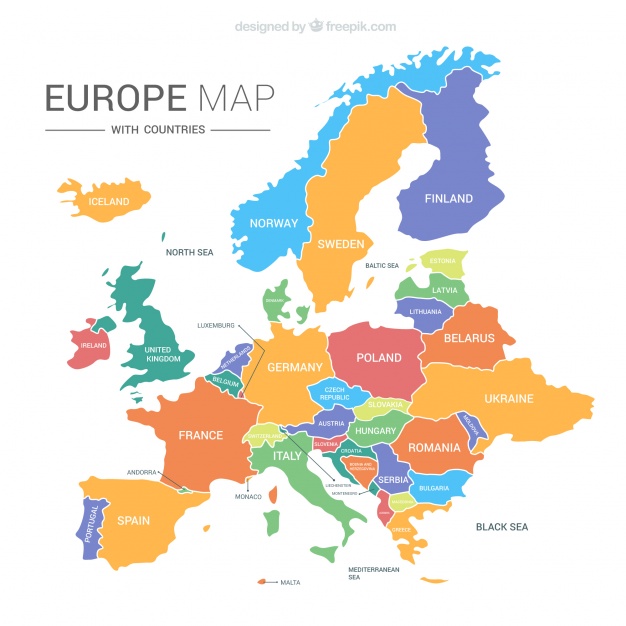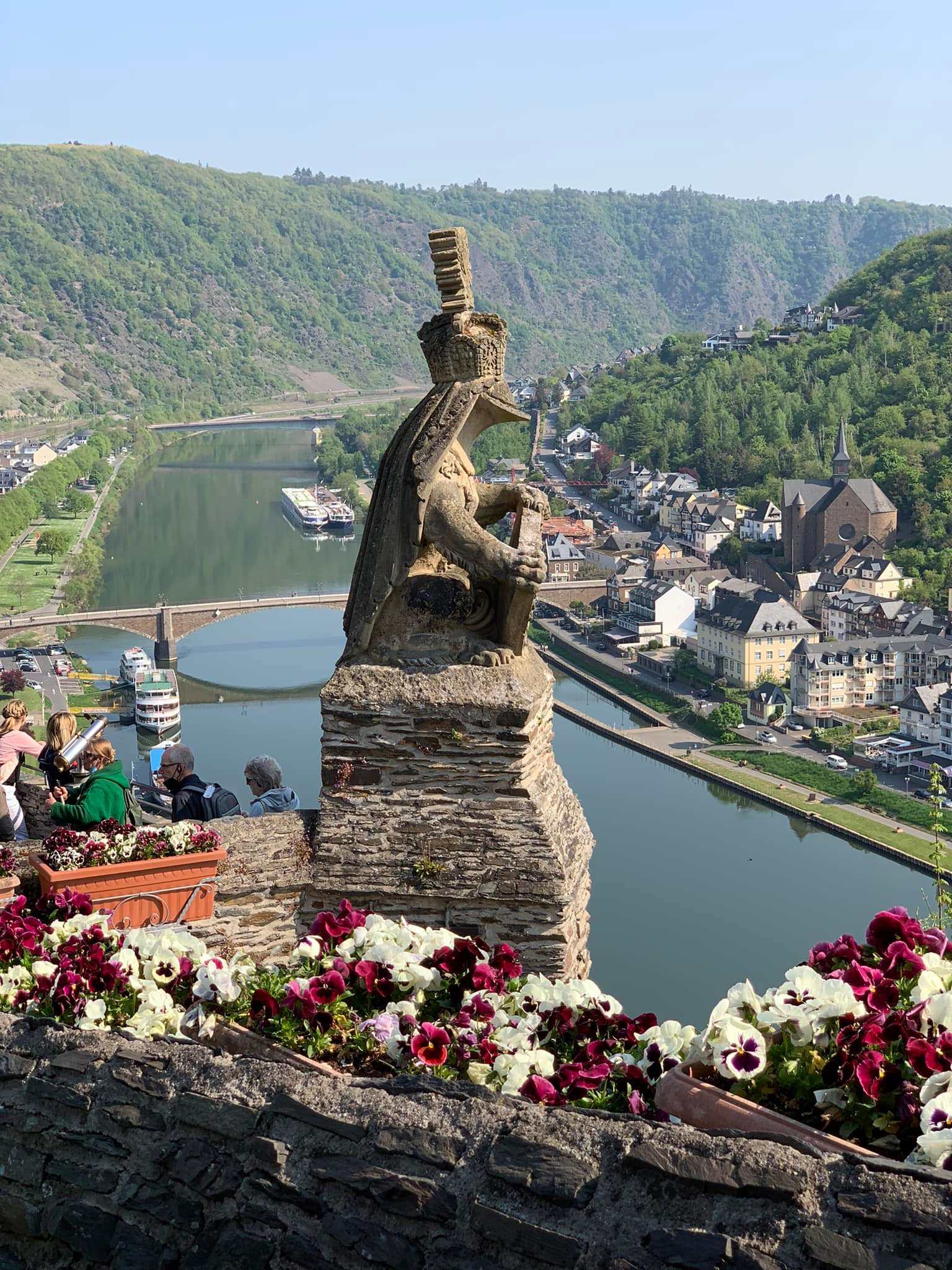
What we do
We work for you and we will do everything we can to meet your travel needs and go that extra mile to help. We can arrange all types of travel within the US or outside, from hotel and resort accommodations to air and ground transportation, including car rental needs and tour packages while finding the best prices. We do not book only flights. We can provide assistance with travel insurance/protection, passport and visa applications, inoculation procedures and other foreign travel requirements. We serve as your advocate in the event something does go wrong. The best thing we do is to match you with the right vacation! This includes destination, resort and within your budget.
Our Services and specialties
All Inclusive Vacations
We Specialize in All Inclusive Tropical Vacation Packages. These packages include Hotel, Flights and transportation to and from the airport. We can help you find the best fit for a resort, destination and trip! Simply answer a few questions for us and we use your answers to go through many destinations, resorts and ammeneties to find the best package and price for you and your budget.
Destination Weddings
We specialize in Destination Weddings and we know that getting married can be overwhelming let alone trying to decide where to go to get married, resort, the laws for marriage in other countries along with many other issues! We can get all of that for you and meet with you to find out what exactly you want for your big day. We will also give you the wedding packages the resorts offer and save you money along with getting you some extra perks. Once you decide, we book you and your guests accommodations, then involve the resorts wedding planner to help get all the details in place for that special day.
Group Trips
We specialize in Group Trips and if you are looking for or needing to organize a group trip for work, a group that you belong to, a class trip, Friends trip, Anniversary trips, Whatever the group may be, we can help you determine your destination, best prices and a Resort/Hotel that will fit your group based on what the group needs and budgets are! We can secure a good rate for your group and also get group pricing for flights and more!
Click on link below to go to Dream Destination Weddings by Adams Global Travel page
Click below to schedule your complimentary destination wedding planning session
Honeymoons
We also specialize in Honeymoons! An escape planned by newly married couples to enjoy themselves after the stress of wedding planning and make new memories together. We can help take all of the worries away by helping you plan your Honeymoon with little worry! We will help you find the best resort for your honeymoon and stay within your budget while getting what you want and desire.
Cruises
Want to take a Cruise but there are so many cruise lines, cruise types and itineraries to look through. If you want Luxury or not, regular cruise or River cruise, we can help you with this by finding out what your needs and wants are. We can decipher the different amenities that are included and what will fit you and your budget. We can also recommend which cruise line will suit you best and can help you chose an itinerary as well.
Getaways
Need a short trip to Las Vegas, a girls getaway to a tropical destination, Bachelor/Bachelorette short getaways, or a site seeing weekend.. We can help you plan any of these. We can help you determine where you want to go what you want do and see! Simply answer a few questions for us so we can assist in getting it right for you!
Excursions
An excursion is a short journey or trip, especially one engaged in as a leisure activity. Whatever vacation you decide on, we can provide you with a list and prices of several excursions that are available to you. We can book what you chose ahead of time, so when you do travel, you have nothing to worry about except to show up and enjoy!
Click below to request a quote for your next trip
Once your trip request has been received, Adams Global Travel will reply to you via email or text within 3 business days.
SOME POPULAR DESTINATIONS TO EXPLORE
CARIBBEAN ISLANDS
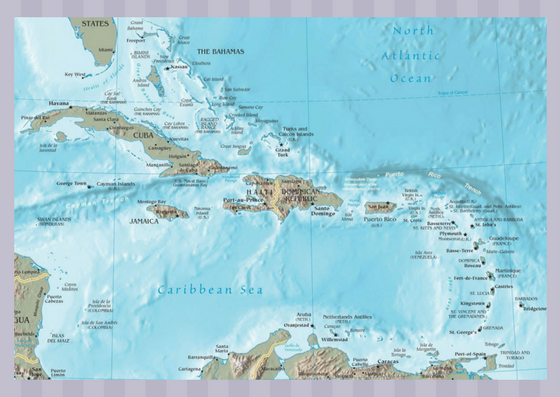
ARUBA
Aruba is one of the three ABC islands in the southern Caribbean, miles off the coast of Venezuela. Aruba is an independent country within the Kingdom of the Netherlands and has a population of approximately 100,000 inhabitants. The island is 21 miles (33 km) long and has an area of about 75 square miles (193 km2). Aruba’s average annual temperature of 82 degrees. Constant trade winds make it more comfortable during the day. However these trade winds tend to diminish slightly during the months September through December. In terms of rainfall, October through January tend to be the wettest months.
THE BAHAMAS
The Bahamas starting just 50 miles off the coast of Florida has 700 breathtaking islands, over 2,000 rocks and cays, claiming to have the clearest water on the planet—with a visibility of over 200 feet. The climate is tempered by cooling trade winds and is cooler than other Caribbean islands due to their location. The average temperature in the Bahama’s range from 80 to 85 degrees in the summer and 70 to 78 degrees in the winter. The best time to visit the Bahamas is from mid-December to mid-April.
BALI ISLAND, INDONESIA
Bali is an Indonesian island and is Indonesia’s favorite friendly tourist destination, known for perfect climate and relaxed atmosphere. This island of flowers, temples and friendly people is considered a real gem by travelers worldwide. Surfing and scuba diving in Bali are a principle interest for water sport enthusiasts around the world. May is the hottest month in Bali with an average temperature of 82 degrees and the coldest is January at 79 degrees with the most daily sunshine hours at 9 in April. The wettest month is January with an average of 90mm of rain.
BARBADOS
Barbados is the most easterly island in the Caribbean chain. The Atlantic Ocean sits to the east, and the Caribbean Sea to the west. Barbados land area measures 166.4 square miles (431 km2). It is 21 miles (34 kilometers) in length and 14 miles (23 kilometers). Temperatures typically range from between 80-86 degrees and 70 – 76% humidity for most of the year. December to May is considered the dry season in Barbados and also the ‘winter’ period. The wet season begins in June and runs until November, the ‘summer’ months for the island. This season also brings with it the Caribbean hurricane season.
BELIZE
Belize is situated on the northeast coast of Central America. The Caribbean Sea lies to the east. Coral islands called cayes, covered with stands of mangrove trees, dot the coast, these cayes protect the jungled coastline from the sea.
North of Belize lies the Yucatan Peninsula of Mexico. The country is divided by the eastward flowing Belize River. Southern Belize is the site of large plantations that grow citrus, an important export. The higher elevation (1,500-2,700 feet) provides spectacular falls for the many streams that lace the land. Temperatures in Belize range from 50 to 95 degrees with an annual mean of 79 degrees. November to January are traditionally the coolest months with a 75 degrees average and May to September are the warmest at about a 81 degrees average.
BERMUDA
THE BRITISH VIRGIN ISLANDS
The Virgin Islands are divided administratively between the United Kingdom and the United Statess. The British territory consists of four larger islands (Tortola, Anegada, Virgin Gorda, and Jost Van Dyke). The town and port is Road Town on Tortola (21 square miles), the largest of the islands. They have a subtropical climate that is pleasant and mild for most of the year. Located in the tropics, there is are trade winds that blow from the northeast most of the year. Temperatures average 78 degrees annually, and humidity is low. The dry season lasts from February to July and the wet season from September to December. Hurricanes usually occur between August and October, and there are occasional light earthquakes.
CAYMAN ISLANDS
The Cayman Islands are made up of three islands: Grand Cayman, Cayman Brac and Little Cayman. The largest, Grand Cayman has a cosmopolitan vibe, gourmet restaurants, world-class diving and the famous Seven Mile Beach. Grand Cayman is the largest and most populous island, about 22 miles long and 8 miles across at its widest, with a total area of 76 square miles . A tropical climate where temperatures are moderate throughout the year, averaging about 81 degrees annually. The rainy season extends from mid-May through October, and the dry season lasts the balance of the year. The Caymans are cool from November to March, with temperatures ranging 65–75 degrees. Rainfall at George Town averages 60 inches annually, although the eastern districts and the other islands are drier. Hurricanes can occur from June through November.
CURACAO
Curacao is a long, arid, and generally flat island, stretching some 40 miles from southeast to northwest, at much the same north-south angles as it’s sister islands in the ABC group (Aruba to the west and Bonaire to the east). The island is about 10 miles (16 km) at it’s widest point, and the area is about 180 square miles , making it the largest island in the Dutch Caribbean Islands group. With an average 20 inches of rainfall yearly, Curacao is generally a dry island. There are few standing bodies of water save some saline ponds, and most of the island’s water is provided by a large desalinization plant found on the south coast. Curaçao doesn’t suffer the wrath of hurricane season. Curaçao’s weather tends to be sunny even throughout the months that other Caribbean islands experience torrential rains. Curaçao’s average temperature rests in the mid-80s all year.
DOMINICAN REPUBLIC
The Dominican Republic occupies the eastern two-thirds of the island of Hispaniola, which it shares with the Republic of Haiti. The country is the second largest in the Caribbean region, with a surface area of 18,704 square miles. Located in the heart of the Caribbean, the Dominican Republic is surrounded by the Atlantic Ocean to the north and to the south by the Caribbean Sea. Spanish is the official language of the Dominican Republic. The Dominican Peso (RD$) is the official currency of the Dominican Republic. The Dominican Republic enjoys a tropical climate all year round, with average temperatures ranging from 66° to 93 degrees. The coldest season is between November and April, and the hottest season is between May and October. June is the hottest month in Punta cana with an average temperature of 82 degrees and the coldest is January at 77 degrees with the most daily sunshine hours at 10 in August.
JAMAICA
Jamaica is the third largest island in the Caribbean Sea, after Cuba and Hispaniola. Jamaica is about 146 miles long and varies from 22 to 51 miles wide.Interior mountains and plateaus cover much of Jamaica’s length, and nearly half of the island’s surface is more than 1,000 feet above sea level. Montego Bay: Annual Weather Averages. July is the hottest month in Montego Bay with an average temperature of 83 degrees and the coldest is January at 76 degrees with the most daily sunshine hours at 11 in July. The wettest month is October with an average of 130mm of rain. The best time to visit Jamaica is November to mid-December.
ST LUCIA
Welcome to Saint Lucia, Fairest isle of all the earth! Born of Volcanic origin, the Island of Saint Lucia offers a burst of natural splendour with every turn. Whether you are adventure seeker, environmentalist, dive enthusiast, a yogi, lovers seeking that ultimate romance experience or in need of a private getaway she will inspire your stories and fill them with joy. November is the hottest month in St Lucia with an average temperature of 83 degrees and the coldest is January at 79 degrees with the most daily sunshine hours at 10 in March. The wettest month is September with an average of 193mm of rain.
ST MARTIN - ST MARTEEN
This 37-square-mile island, ringed with white-sand beaches is shared by two countries: France and the Netherlands. When you visit St. Maarten, the Dutch side in the south, it bustles with sprawling resorts, wide boardwalks, lively beach bars, and late-night casinos. Meanwhile, French St. Martin, with its harbor full of brightly colored boats and houses built up into the cliffs, is reminiscent of a Mediterranean fishing village. The best time to visit St. Martin and St. Maarten is May and June or between November and mid December. The climate in Saint Maarten is tropical, hot and sunny all year round: the daily average temperature goes from 77 degrees in the period from January to March, to 82 degrees from June to October.
TURKS AND CAICOS
Turks and Caicos is an excellent destination for divers and snorklers. Both the Caicos Conch Farm and the bird sanctuary on uninhabited French Cay offer unique ways to commune with local wildlife. For everyone who has ever dreamed of getting away from it all and finding a tropical hideaway far removed from all the hustle, bustle, fuss and muss of modern life – Turks & Caicos is that rarest of discoveries, a true island escape. The average temperature ranges between 80 and 90 degrees from June to October, sometimes reaching the mid 90’s, especially in the late summer months. From November to May the average temperature is 80 to 84 degrees.
US VIRGIN ISLANDS
The U.S. Virgin Islands are “America’s Caribbean Paradise”. You can visit either St. Thomas, St. John or St. Croix, or better yet, spend a little time on all three islands. That way you’ll get plenty of pampering, undisturbed nature and colonial history in one vacation. Each island offers something different. St. Thomas is known for luxury. St. John appeals to honeymooners and nature lovers. St. Croix has sugar cane plantations and rum distilleries that offer a glimpse into both the past and the present of the Virgin Islands. The climate of the U.S. Virgin Islands is tropical, hot all year round, with a relatively cooler period from December to April, with average highs around 82/84 degrees, and a hotter and sultry period from May to November, with highs around 88/90 degrees.
PUERTO RICO
Puerto Rico – The north and east shores face the Atlantic Ocean and the southern and west coasts face the Caribbean Sea. Puerto Rico’s mainland is roughly 35 miles from north to south and 100 miles wide from west to east, making its area about 3,500 square miles. The main island has an estimated 300 miles of coastline. August is the hottest month in Puerto Rico with an average temperature of 75 degrees and the coldest is January at 63 degrees with the most daily sunshine hours at 11 in August. The wet season takes place from May to October with the wettest month is February with an average of 22mm of rain.
RIVIERA MAYA - MEXICO CARIBBEAN
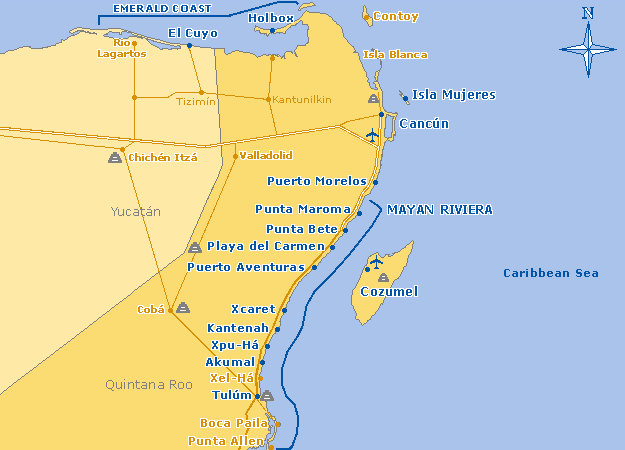
CANCUN
Cancun makes a fun vacation spot in its own right, with its long, ribbons of beaches beside the amazingly blue Caribbean. You can go snorkeling or scuba diving, or take lessons. Try surfing, wind-surfing, sailing or swimming. You might say that the Zona Hotelera/Hotel Zone part of Cancun is called “El Centro,” and it’s a delight to visit and explore. You can take a cab or a bus and be in Parque Las Palapas in a matter of minutes, a large plaza with food carts, a playground and a large stage. Families flock here on weekends. June is the hottest month in Cancun with an average temperature of 82 degrees and the coldest is January at 73 degrees with the most daily sunshine hours at 11 in August. The wettest month is September with an average of 270mm of rain.
PLAYA DEL CARMEN
Playa del Carmen is located in the Riviera Maya area on the Caribbean coast of Mexico, province of Quintana Roo. Playa del Carmen lies exactly between Cancun and Tulum, around 37 miles away. Playa del Carmen is one of the top diving destinations in the world, thanks to vibrant sea life and dazzling underwater caverns. Playa is a hipper and more modern version of the fishing village it once was. May is the hottest month in Playa del Carmen with an average temperature of 83 degrees and the coldest is January at 74 degrees with the most daily sunshine hours at 11 in May. The wettest month is September with an average of 173.1mm of rain.
AKUMAL
Akumal is centrally located in the heart of the Maya Riviera. Akumal in Mayan means “Place of the Turtle” and is a great spot for snorkeling. There are 6 crystal clear bays – from the northern end is Yal Ku Lagoon, Half Moon Bay, Akumal Bay, South Akumal, Aventuras Akumal and Jade bay. Far away from the high rise resorts this is a perfect spot for children to play safely or for you to relax and do nothing but spend hours reading and snorkeling. Directly offshore is the Mesoamerican Barrier Reef, the second longest in the world and one of the premier scuba diving destinations. May is the hottest month in Akumal with an average temperature of 82 degrees and the coldest is January at 75 degrees with the most daily sunshine hours at 8 in May. The wettest month is September with an average of 220mm of rain.
COZUMEL
Cozumel is located 12 miles off the eastern coast of the mainland (Yucatan Peninsula.) Cancun is on the mainland approximately 35 miles north from Cozumel. You can fly into Cancun and take the airport bus/ferry crossing. Or zoom directly into Cozumel’s small, modern airport. The island is one of the top 5 dive destinations in the world thanks to the stunning coral reefs (second largest in the world) that are located just off it’s southwestern coast. It also has clear water with visibility often as great as 200 feet. Very good for Diving and Snorkeling. August is the hottest month in Cozumel with an average temperature of 82 degrees and the coldest is January at 75 degrees with the most daily sunshine hours at 11 in May. The wettest month is September with an average of 247mm of rain.
PEURTO AVENTURAS
The Marina area is the heart of Puerto Aventuras with the Dolphin Discovery Programs at the center. Restaurants serve breakfast, lunch and dinner and often have live music in the evenings. Puerto Aventuras is a safe community for you and your families. However, please be careful with your valuables and lock your rooms when you go out. For shopping, stroll around the local shops. Puerto Aventuras is conveniently located close to many of the major tourist attractions in the area. Mayan ruins, cultural tours, and Eco-parks are all closeby. Warmest months (with highest average high temperature) are May, July and August (91 degrees). Month with lowest average high temperature is January (82 degrees). Months with highest average low temperature are June, July, August and September (73 degrees).
PUERTO MORELOS
Puerto Morelos is one of the best kept secrets in the Yucatan. If you’ve been to the Mayan Riviera, you’re likely to stay in a large resort or perhaps somewhere in Cancun or Playa del Carmen. There are obviously other places to visit and stay in the area, but that is without question where the majority of travelers gravitate. Puerto Morelos is a small town, with a friendly, laid-back feel. If you are a “Spring Breaker” or are looking for a party scene, Puerto Morelos IS NOT the place for you Although it surprisingly has a lot of activity and plenty to do. This city has a tropical climate. When compared with winter, the summers have much more rainfall. The Köppen-Geiger climate classification is Aw. The average annual temperature is 78.4 degrees in Puerto Morelos. Precipitation here averages 1106 mm.
MEXICO - Pacific Ocean
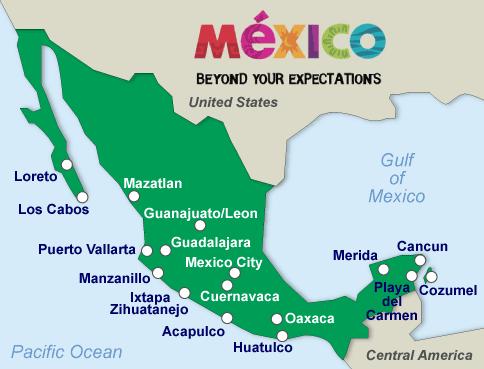
LOS CABOS
Located at the south end of the Baja California Peninsula, Los Cabos is a unique mixture of desert landscapes, beaches, and mountainous zones. National Geographic magazine has named Los Cabos one of the must-see places to visit. Baja California Sur is surrounded by the magnificence of the Sea of Cortes and the Pacific Ocean. The laid-back lifestyle of there will quickly grow on you. July is the hottest month in Los Cabos with an average temperature of 87 degrees and the coldest is January at 66 degrees with the most daily sunshine hours at 12 in June.
PUERTO VALLARTA
Puerto Vallarta is one of Mexico’s most enticing coastal destinations. Relax on the sandy beaches, browse in the quirky shops, eat in the stylish restaurants and wander the picturesque central streets and enticing malecón (boardwalk). There are plenty of activities, including boat trips, horseback rides, diving trips and day trips to the interior. After sunset, Vallarta takes on a new identity with nightlife along the cobblestone streets and numerous LGBT-friendly options in what is the gay beach capital of Mexico. une is the hottest month in Puerto Vallarta with an average temperature of 81 degrees and the coldest is January at 72 degrees with the most daily sunshine hours at 12 in May. The wettest month is September with an average of 358mm of rain.
IXTAPA
The Ixtapa region offers fishing charters, watersports and scuba diving sites. Ixtapa has high-end golf courses and lighted tennis courts. Horses are available for beach rides in Playa La Ropa and Playa Linda. Sun worshippers will find beaches that are packed with activity as well as isolated tropical oases. To really get away, visit the fishing settlement of Barra de Patois. Resort living is paired with an authentic Mexican urban experience and a small-town feel in the state of Guerrero. Ixtapa is an oceanfront stretch with year-round warm waters and a wide variety of resorts, including all-inclusive accommodations. Many tourists come here to enjoy the long stretches of beaches in front of the hotels. Zihuatanejo has grown from a fishing village of a few hundred residents to a thriving town with restaurants, art, entertainment and a beautiful protected bay. The temperature remains fairly steady year-round, with winters averaging daily highs of 90 degrees and lows of 70 degrees. Summers are just a slightly hotter, when days typically heat up to 91 degrees and nights cool off to 74 degrees.
NORTH PACIFIC
COSTA RICA
Costa Rica has two coasts and two main cultures. On the Pacific Ocean, are the Ticos (Costa Ricans) and on the Atlantic Ocean, especially in and around Limon, is an English-speaking, Jamaican influenced African-Caribbeanculture. A high altitude change throughout the central part of the country offers all ranges of precipation levels creating hundred of mico climate zones. If the desire is to experience a warm and dry climate with seasonal changes, or a jungle to still see the autumn colors in a variety of trees, then the dry forests of the northwest Pacific Coast of Costa Rica in the Guancaste province could be your choice. The country offers four types of rain forests and over 60 clearly recognizable volcanoes. Costa Rica, meaning “Rich Coast”.the average annual temperature is around 70 to 81 degrees and the coolest months of the year are November, December and January. The months March through May are the hottest months of the year, so make sure you protect yourself from the sun.
For information on any other locations in the North Pacific Please Contact us
HAWAII
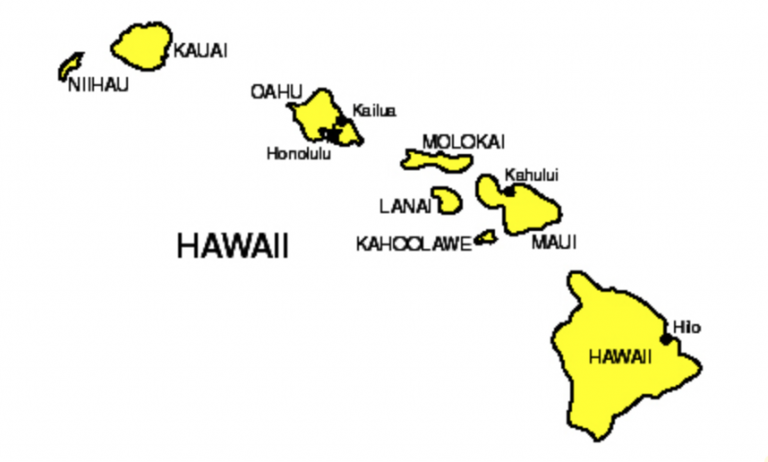
KAUAI
Kauai is the fourth most visited island. The island is defined by its scenery and laid back persona. The island also boasts more coastline filled with beaches than any other island in the chain. Hanalei Bay is a popular location for water activities and has what are the best beaches in all of Hawaii. Kauai’s south shore is popular due to its abundance of sunny weather, even during the wet winter months. Kauai’s weather is pleasantly warm year-round. Even in the coolest month of January, daytime highs average 78 degrees and the evening lows dip to 65 degrees. August is the warmest month with daytime highs averaging 85 degrees and cooling off to 75 degrees in the nighttime.
OAHU
Oahu offers so much to attract- and keep- the attention of locals and tourists alike. Oahu may be number three in size among its fellow islands in the Hawaiian chain, but it is first in population. Oahu is also the most visited of all the Hawaiian islands. Oahu is defined by the state capital of Honolulu, Pearl Harbor, and the world-famous Waikiki Beach. If you are staying on Oahu you, too, will book a room in Waikiki or Honolulu yourself. Nearly all of the island’s resorts are located in this small area. August is the hottest month in Hawaii with an average temperature of 80 degrees and the coldest is January at 73 degrees with the most daily sunshine hours at 11 in July. The wettest month is November with an average of 124mm of rain.
MOLOKAI
Molokai is often called “The Friendly Island” because the aloha spirit flourishes here. If you’re looking for the real Hawai’i, this is it. If you’re looking for breathtaking natural beauty, rain forests or deserted beaches, this is it. It is an island where no building is taller than a palm tree. An island where there is so little automobile traffic, there’s not a single traffic light. There’s no mall, no elevators and no neon. Shopping is done in small, friendly businesses in Kaunakakai, the largest town, and in the villages of Kualapu’u and Maunaloa. Life here is slow and relaxed. Molokai is definitely a year-round destination, and temperatures average about 75 degrees. During the winter months, from December through March, nighttime temperatures may dip into the low 60s, and the chance of rain showers are more likely.
LANAI
Taking a trip to Lanai, is like taking a trip back in time.James Dole’s Hawaiian Pineapple Company bought the island in December of 1922. The island of Lanai would become the largest pineapple plantation in the world and at its peak produced ninety percent of the world’s pineapple. Lanai City has a central park, called Dole Park, which unifies the town; all the small businesses and banks, the post office and the school, Hotel Lanai and the recreational complex, all surround the park. There is a great feeling of community. There is a slower pace of life and locals certainly have more time to talk story. Lanai has two championship golf courses, scuba diving, world class snorkeling at Hulupoe Bay Marine Life Preserve, horseback riding, hiking, kayaking, deep sea fishing, and miles of remote beaches. If you feel like relaxing and doing nothing, Lanai is the place to be. The climate in Lanai City is warm, humid, windy, and mostly clear. Over the course of the year, the temperature typically varies from 60 to 81 degrees and is rarely below 55 degrees or above 84 degrees.
MAUI
Maui is the second-most-visited island in Hawaii. The island has a reputation for being a playground for all tourists, not just the super-rich. Maui, known also as “The Valley Isle,” is the second largest Hawaiian island. The island beloved for its world-famous beaches, the sacred Iao Valley, views of migrating humpback whales (during winter months), farm-to-table cuisine and the magnificent sunrise and sunset from Haleakala. Maui has 30 miles of white, red, and black sand beaches, 80 beaches in total and has more miles of accessible beach than any of the other Hawaiian Islands. Over 12,000 Humpback Whales travel 3,500 miles from Alaska to Hawaii each year to breed, birth and nurse their calves. In the beach resorts, summer months heat up to an average around 88 degrees. Average summer evening temperatures only dip to the low 70s. The temperatures in Maui’s higher elevations are significantly lower than from Kahului. If you go to the Upcountry, like Kula for example, you can expect temperatures to be 5°-10°lower.
HAWAII
The Big Island is the largest and most exciting of all Hawaiian islands. Hawaii has the #1 tourist attraction (which also happens to be one of the most active volcanoes in the world): the Kilauea volcano. The Big Island is officially known as the island of Hawai’i. The Big Island deserves this name because of its surface area, which is larger than the land surface area of all other Hawaiian island combined! The Big Island is also the largest island of the United States. If you like beaches you are in luck. The Big Island has quite some amazing white, black, and green sand beaches! The Big Island spans 8 out of the world’s 13 climate zones and the activities you can enjoy here are almost as distinct. You can snorkel over tropical reefs and enjoy a sunset snowball fight on the summit of Mauna Kea a few hours later. And then there is, of course, the unforgettable Manta Ray night dive. August is the hottest month in Hawaii with an average temperature of 80 degrees and the coldest is January at 73 degrees with the most daily sunshine hours at 11 in July. The wettest month is November with an average of 124mm of rain.
NIIHAU
Niihau is known as “The Forbidden Island” because non-native Hawaiians are not allowed to go there. There are about 250 native Hawaiians living on Niihau and their lifestyle has remained the same over all these years. There are no shops or restaurants, no electricity, no paved roads, no cars and no hotels. So in other words life is very simple. People get around by bike and on foot. The island of Niihau encompasses 70 square miles and it is located 18 miles northwest of Kauai. The only job available on Niihau is at the Robinson family ranch, where the majority of the population works raising cattle. Niihau is very dry, so the scenery and vegetation is not as lush and tropical. Niihau makes wonderful shell leis from unique shells that can be found on Niihau’s beaches. Since these types of shells are so unique and rare, collectors are ready to pay thousands of dollars for Niihau shell lei. Access to Niihau is very limited and goes by invitation only, which means that you can only visit it if a Niihau resident or a member of the Robinson family invites you.
KAHOOLAWE
Hawaiian Kaho‘olawe, volcanic island, Maui county, Hawaii, U.S. lies 6 miles (10 km) off the southwestern shore of Maui island, from which it is separated by the Alalakeiki Channel. It is 45 square miles (117 square km) in area (the smallest of the main Hawaiian Islands) and rises to an elevation of 1,477 feet (450 metres) at Lua Makika, its highest point. Archaeological evidence reveals that the island was inhabited for more than 1,000 years, but it is now uninhabited. Kahoolawe was named for the Hawaiian god Kanaloa. From 1826 to 1853 the island was used as a penal colony by Hawaiian monarchs. In 1910 it became a forest reserve, but reforestation efforts were unsuccessful. Goats and sheep were introduced in the 19th century, and from 1941 to 1990 the island was used by the U.S. armed forces for munitions testing and bombing exercises, both of which further damaged the island’s ecology. The state government took control of the island in 1994, and there have been efforts to rid the island of unexploded ordnance and to reintroduce native vegetation.
For information on any of the locations in Europe Please Contact us
OTHER POPULAR DESTINATIONS
MALDIVES
The Maldives are an archipelago of 1,192 coral islands grouped into 26 natural coral atolls in the Indian Ocean. They lie south-southwest of India and west of Sri Lanka. Only 192 islands are inhabited. The rest of the islands remain virgin islands except for more than 100 islands that have been developed for the top end of the tourist market. With its abundant sea life and sandy beaches. The Maldives islands are grouped into large, ring-shaped coral reefs. The land area of an island average only one to two square kilometers.The Maldives are tropical, with plenty of sunshine and temperatures around 86 degrees throughout the year. Although the humidity is relatively high, the constant sea breezes help to keep the air moving. Two seasons dominate Maldives’ weather: the dry season which is the northeast monsoon and the rainy season or southwest monsoon from April – October, with rainfall increasing particularly from June to August. The annual rainfall averages 2,540 millimeters (100 in) in the north and 3,810 millimeters (150 in) in the south.
BORA BORA
The most celebrated island in the South Pacific, Bora Bora is French Polynesia’s leading lady. Bora Bora is a romantic reality. It is an international honeymoon destination. The island lies just northwest of Tahiti, less than an hour away by plane from Papeete. The airport is located on a small, separate part of the island known as Motu Mete. Bora Bora has become famous for overwater bungalows. Many of these lavish floating villas have glass floors to view the lagoon life below. You can visit the main village of Vaitape and shop at the local boutiques or dine at one of Bora Bora’s restaurants. You can also explore Mount Pahia and Mount Otemanu on a guided hike or Jeep Safari tour. Popular lagoon excursions include snorkeling, diving, cruising, fishing, paddle boarding, kitesurfing, Jet Skiing, and of course, shark and ray feeding. You can also parasail, skydive, or tour the island by helicopter. The best times to go to Bora Bora are November and April. But really anytime is a good time to visit Bora Bora, since the weather is 80 degrees and above, all year round.
TAHITI
Tahiti is French Polynesia’s largest and most glamorous tropical island, located in the southern Pacific Ocean. The north western area is called Tahiti Nui (‘big Tahiti’), while the smaller area to the south east is known as Tahiti Iti (‘small Tahiti’).Papeete is home to the only international airport. The coast around Papeete is heavily populated, but the interior of Tahiti Nui is largely unpopulated. The population comprises largely of Polynesians with the rest made up of Europeans, Chinese and mixed heritage. The coastal areas of Tahiti are dotted with tall palm trees and fields of tropical flowers. The main cash crops here are copra, vanilla, sugarcane and tropical fruits.Popular islands to visit in French Polynesia include: Austral Islands, Gambier Islands, Marquesas Islands, Society Islands and Tuamotus.The City Market in Papeete is a must see and features many stalls selling fresh produce, seafood and other goods. The Tahitian Pearl market is also a must-see. During the high season, or winter, temperatures range from 70-82 degrees, while in the low season, summer, temperatures vary from 70-85 degrees. December and January average 12 inches of rain a month, however, Tahiti receives more hours of sun than Hawaii during the comparable humid season.
United States of America
